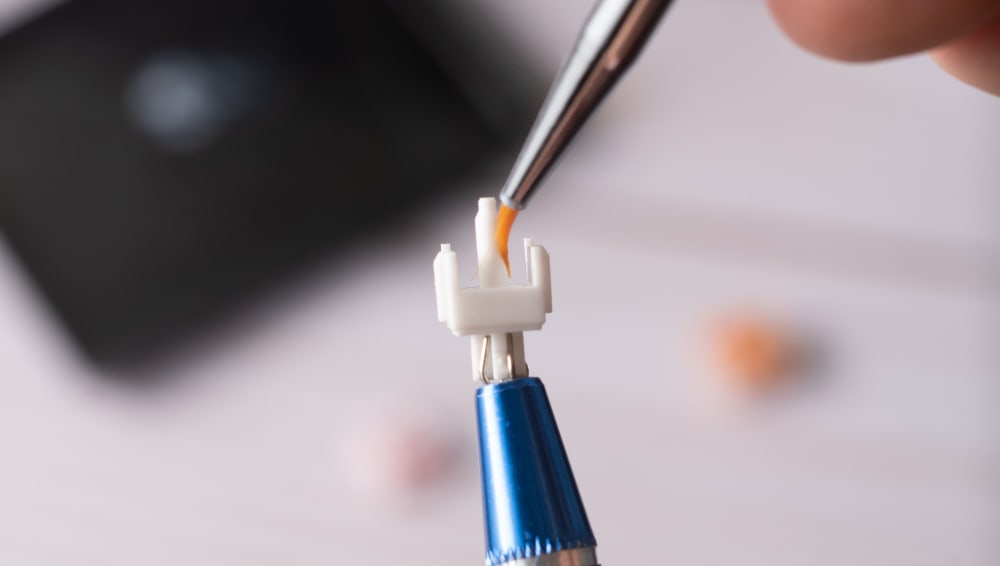Welcome to the world of mechanical keyboards! If you want to improve your keyboard’s performance, lubing switches is a great idea. This blog post will guide you on how to lube switches effectively. We will discuss where to lube to get the best results.
What Are Mechanical Switches?
Mechanical switches are the heart of mechanical keyboards. They help register each key press. There are many types of switches, each with unique features. Common types include:
- Linear Switches: Smooth and silent.
- Tactile Switches: Feel a bump when pressed.
- Clicky Switches: Make a sound when pressed.
Lubing switches can enhance their feel and sound. It makes typing smoother and quieter.
Why Should You Lube Your Switches?
Lubing switches has many benefits. Here are a few:
- Smoother Key Presses: Lubing helps reduce friction.
- Less Noise: It can make clicky switches quieter.
- Increased Lifespan: Lubing can protect the internal parts.
By lubing, you can make your keyboard feel brand new. It is an easy way to upgrade your typing experience.
What You Need to Lube Your Switches
Before you start, gather the necessary tools. Here’s a list:
- Switch Lube: Use a high-quality lubricant.
- Brush: A fine brush works best.
- Keycap Puller: To remove keycaps easily.
- Switch Puller: To remove switches from the keyboard.
- Container: For holding switches while lubing.
Having the right tools makes the process smoother and easier.

Credit: www.reddit.com
Where to Lube Your Switches
Now that you have everything, let’s talk about where to apply the lube. Follow these steps for the best results:
1. Lubing The Spring
The spring is inside each switch. It is essential to lube it. Apply a small amount of lube to the spring. This reduces friction and makes it smoother.
2. Lubing The Stem
The stem is the part that moves up and down. It is crucial for key presses. Lightly coat the sides of the stem with lube. Avoid over-lubing, as it can make the switch feel sticky.
3. Lubing The Housing
The housing holds all parts of the switch. You can add a small amount of lube to the inside walls. This helps reduce noise when the switch is pressed.
4. Avoid The Electrical Parts
Do not apply lube to the electrical contacts. Lubing these parts can cause problems. It may lead to malfunctioning switches. Always be careful to keep the lube away from these areas.

Credit: kineticlabs.com
Steps to Lube Your Switches
Now, let’s go through the steps to lube your switches:
- Remove Keycaps: Use the keycap puller to take off the keycaps.
- Remove Switches: Use the switch puller to take out the switches.
- Disassemble Switches: Carefully open each switch for lubing.
- Apply Lube: Use the brush to apply lube to the spring, stem, and housing.
- Reassemble Switches: Put the switches back together after lubing.
- Reinsert Switches: Place the lubed switches back into the keyboard.
- Put Keycaps Back: Finally, put the keycaps back on your keyboard.
Following these steps will ensure your switches are lubed correctly.
Common Mistakes to Avoid
While lubing, avoid these common mistakes:
- Over-Lubing: Too much lube can make switches sticky.
- Forgetting to Clean: Always clean switches before lubing.
- Lubing Electrical Parts: This can cause damage.
Being cautious will help you achieve the best results.
Tips for the Best Lubing Experience
Here are some tips to make lubing easier:
- Work in a Well-Lit Area:
Frequently Asked Questions
Where Should I Lube My Switches?
Focus on the stem, spring, and housing for optimal performance and smooth operation.
What Type Of Lube Is Best For Switches?
Use a lightweight lubricant like Krytox or Tribosys for best results and minimal drag.
How Often Should I Lube My Switches?
Reapply lube every 6 to 12 months for consistent performance and longevity of your switches.
Can I Use Any Lubricant For Switches?
Avoid household lubricants; choose specifically designed options for mechanical switches to prevent damage.



